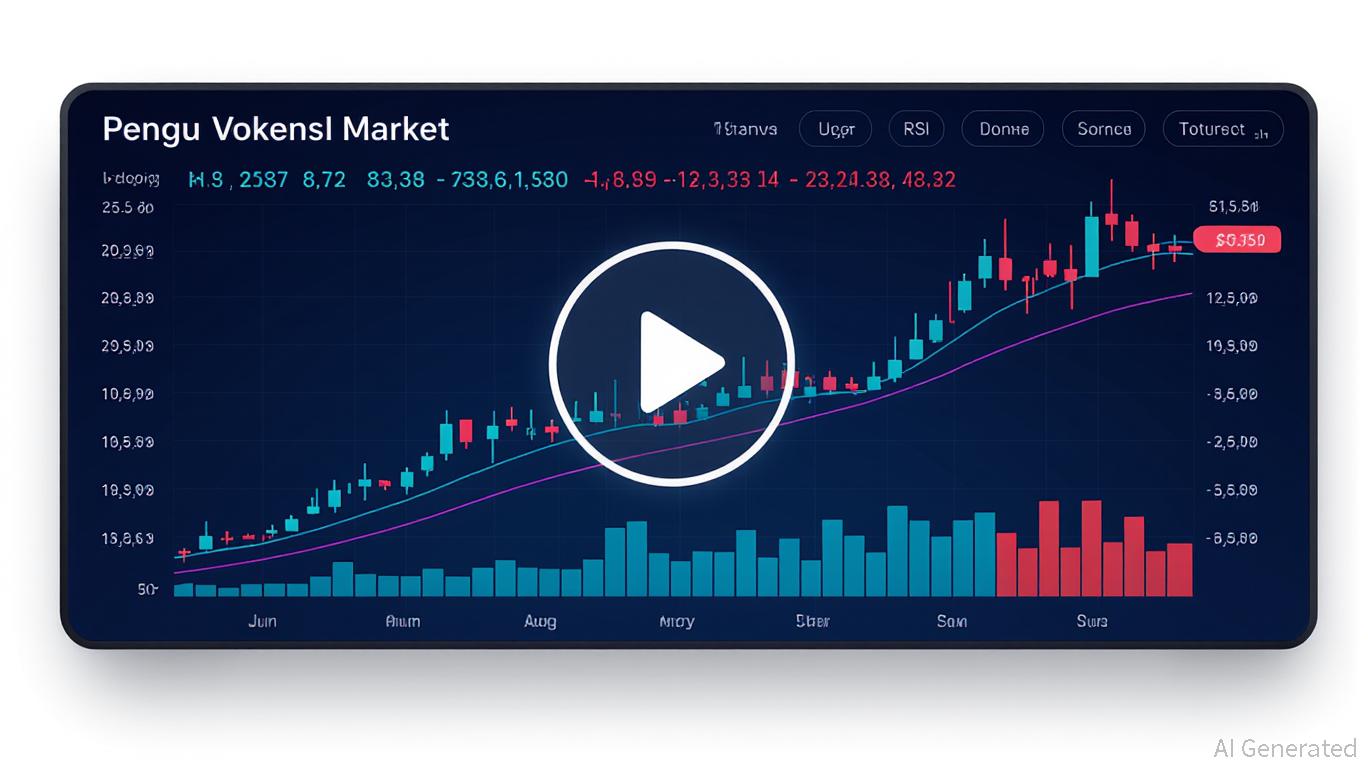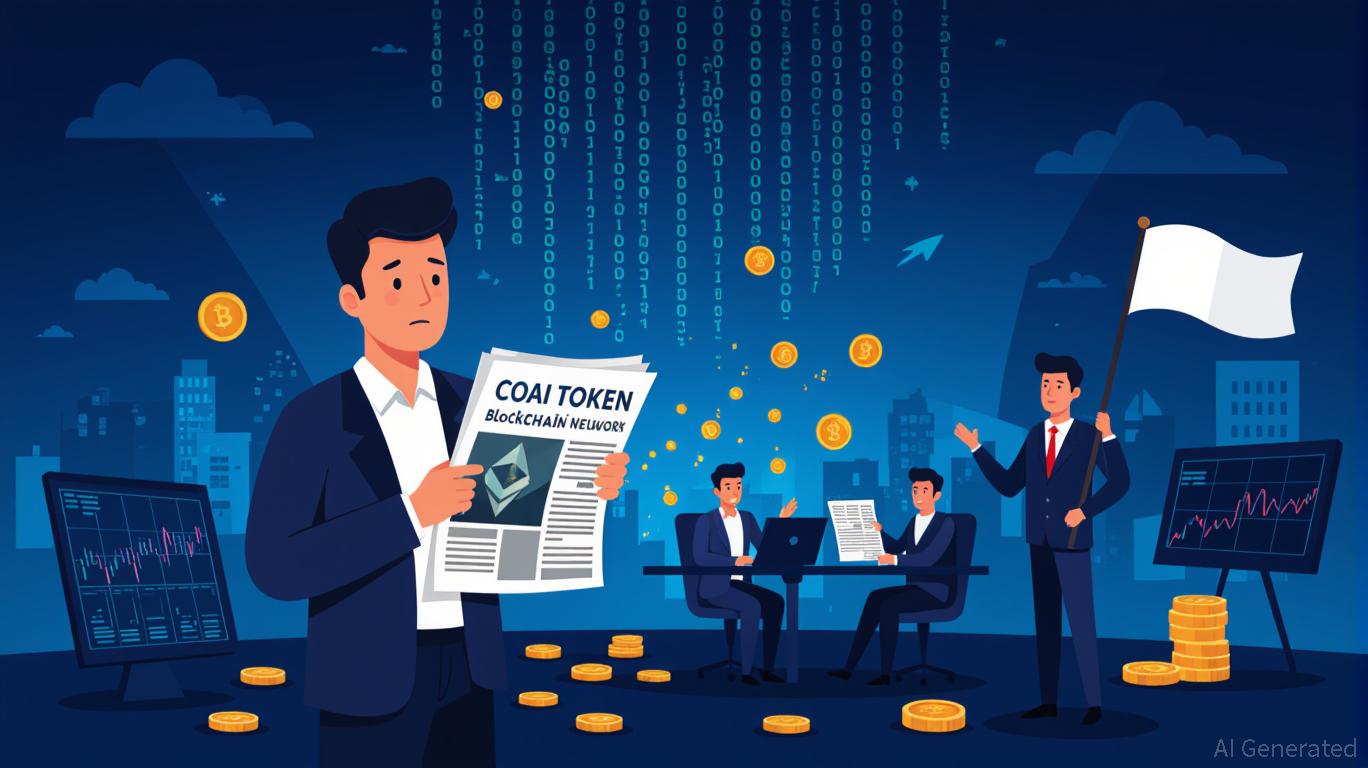South Korea's KRW1 Stablecoin Strives to Strengthen Its Position as a Global Leader in Digital Finance
- South Korea's BDACS launched KRW1, a won-backed stablecoin on Circle's Arc blockchain, marking its first cross-border digital finance gateway. - The stablecoin, fully collateralized and audited by Woori Bank, leverages Arc's interoperability to expand beyond Avalanche, aligning with Korea's digital finance strategy. - Circle's Arc, now hosting 100+ institutions including BlackRock, positions KRW1 as part of a growing Asian trend in blockchain-based stablecoins. - Regulatory challenges persist as Korea dr
South Korea’s BDACS has

KRW1 is fully backed by the Korean won and undergoes audits by Woori Bank. The stablecoin is set to use Arc’s interoperability features to broaden its presence beyond its original launch on the
This collaboration highlights South Korea’s forward-thinking approach to digital asset development. The government is currently preparing new regulations for stablecoins to ensure compliance and encourage innovation. BDACS CEO Ryu Hongyeol emphasized the partnership’s importance for “bringing Korean innovation to the global arena,” noting that Arc’s capabilities—such as rapid transaction finality and privacy options—serve both institutional and individual users. BDACS also announced plans to
Circle’s Arc blockchain, which began its public testnet in October 2025, has drawn participation from over 100 international institutions, including BlackRock and Goldman Sachs. By joining this network, KRW1 stands alongside national stablecoins from Japan, Brazil, and the Philippines, reflecting a growing trend of Asian countries embracing blockchain-based financial solutions. The platform’s architecture, which includes stable U.S. dollar-denominated fees and easy compatibility with fiat-linked assets, makes it a strong contender for cross-border payments and asset tokenization.
Nonetheless, regulatory oversight remains a significant concern. The Bank of Korea (BOK) has encouraged banks to lead stablecoin issuance to reduce risks, but critics like Sangmin Seo from the Kaia DLT Foundation advocate for broader rules that would allow compliant non-bank entities to participate. BDACS has reiterated its dedication to transparency, ensuring that KRW1 tokens are continuously audited and securely managed.
The rollout of KRW1 on Arc will proceed in phases, with BDACS and
For Circle, this collaboration strengthens its foothold in Asia, where demand for stablecoins is rising. The Arc network, together with its
As KRW1 adoption grows, its impact will depend on its use in payments and international transfers. BDACS aims to establish South Korea as a leader in digital finance by merging strict local regulations with global blockchain technology, potentially transforming the regional landscape for fiat-backed digital currencies.
---
Disclaimer: The content of this article solely reflects the author's opinion and does not represent the platform in any capacity. This article is not intended to serve as a reference for making investment decisions.
You may also like
Moonbirds to launch BIRB token in early Q1 2026

Aligning Universities with Emerging Industries: The Critical Need for STEM Investment
- Global industries demand AI, renewable energy, and biotech skills faster than traditional education systems can supply, creating a critical skills gap. - Universities like MIT and Stanford are embedding AI across STEM curricula while industry partnerships accelerate hands-on training in automation and biomanufacturing. - Renewable energy programs with apprenticeships and public-private funding are addressing talent shortages as $386B global investments outpace workforce readiness. - Biotech's fragmented

PENGU Token Value Soars: Blockchain Data and Institutional Interest Indicate Optimal Timing for Investment
- PENGU ranks #81 with $706.5M market cap, showing rising institutional interest and whale accumulation. - The pending Canary PENGU ETF, if approved, could unlock institutional capital by including NFTs in a U.S. ETF. - Mixed on-chain signals (RSI 38.7, OBV growth) and 2B tokens moved from team wallets highlight uncertainty. - Partnerships with Care Bears and Lufthansa, plus Bitso collaboration, expand utility but face regulatory risks. - Recent 8.55% price rebound and 2.6% gain post-BNB listing suggest ca

Evaluating How the COAI Token Scandal Influences Cryptocurrency Regulatory Policies
- COAI Token's 88% price crash and $116.8M loss exposed systemic risks in centralized AI-DeFi projects with opaque governance. - Global regulators responded with stricter frameworks, including EU's MiCA and Singapore's asset freezes, to address jurisdictional gaps. - Institutional investors now prioritize compliance, with 55% of hedge funds allocating to digital assets via tokenized structures in 2025. - Emerging solutions include AI-driven risk platforms and anthropological governance models to enhance tr
